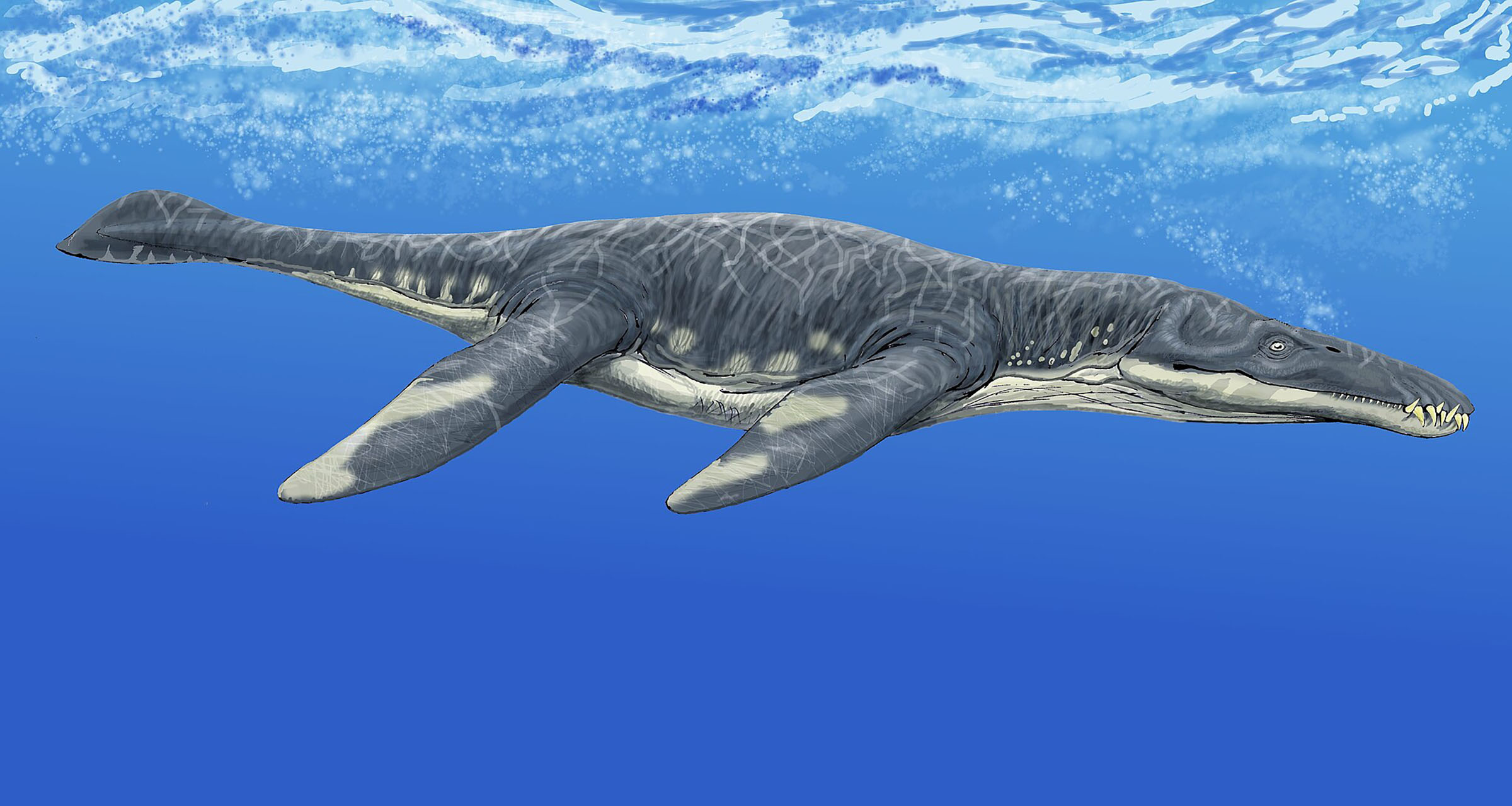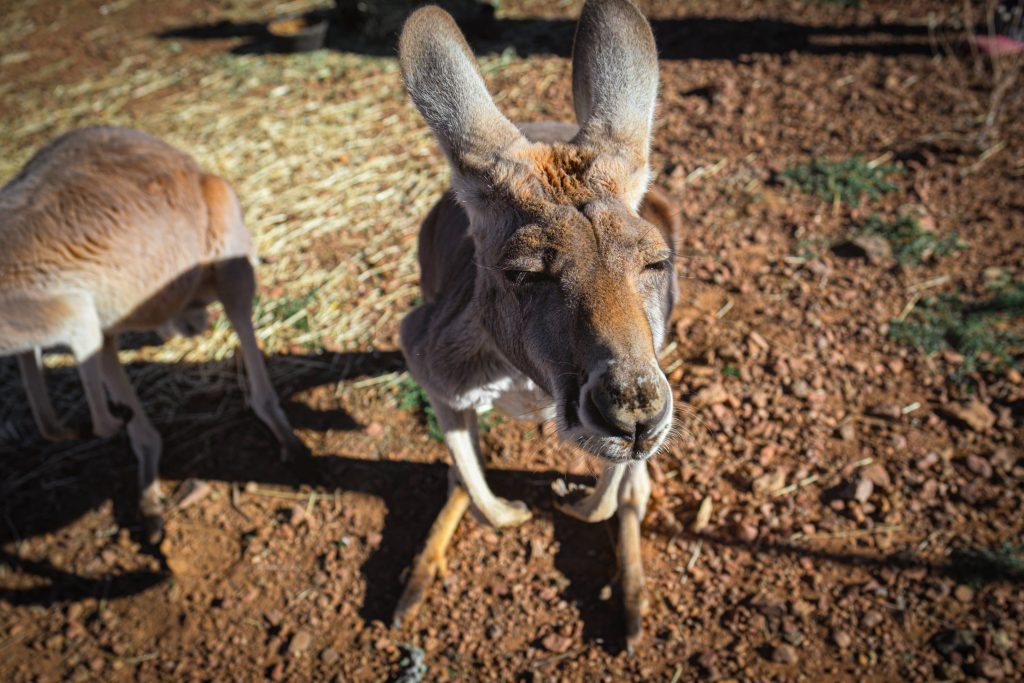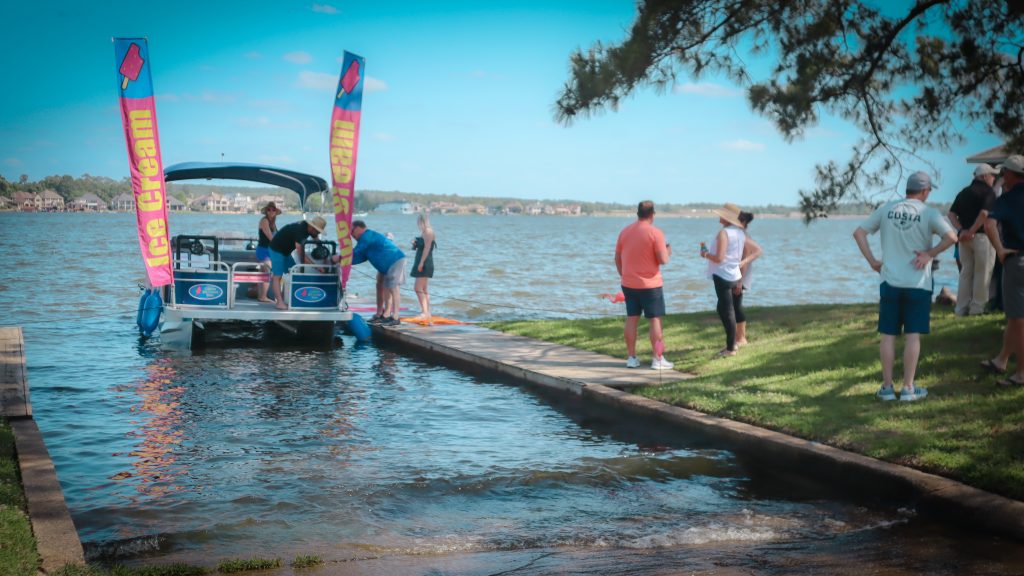
Evidence suggests the short-necked plesiosaur once lived in the seas covering what is now West Texas. Photo courtesy DiBgd, CC BY-SA 4.0, via Wikimedia Commons
Approximately 150 million years ago, a toothy marine reptile swam through the Texas seas. When it died, it drifted to the bottom, where scavengers feasted and silt covered its bones. That should have been the end of it. Instead, through the slow action of geology, some of those bones eroded out in what is today the Malone Mountains of West Texas. Collected by a team of scientists from Southern Methodist University and the University of Texas at Austin, those bones were recently determined to be the state’s first known Jurassic vertebrate fossils.
The bones belonged to a plesiosaur, part of a diverse group of marine reptiles that dominated the seas throughout the Jurassic and Cretaceous eras. Plesiosaurs came in multiple families, each of which experimented variously with long, stiff necks (for catching fish) or shorter ones (often for tackling larger prey.)
When it comes to the 180-million-yearslong Mesozoic Era—when dinosaurs ruled the land and other reptiles the seas and skies—Texas’ fossil record is uncommonly rich. Triassic quarries produced gharial and dinosaur-like crocodile relatives. Fossils from the Cretaceous, when dinosaurs reached their full flower, are found throughout Central and West Texas.
But rocks from the Jurassic Period—the epoch from 145 to 200 million years ago—are largely absent from Texas. “Out of 270,000 square miles in the state, there’s 13 square miles of Jurassic outcrop in the Malone Mountains, and it’s the one place to go look for Jurassic fossils,” says Steve May, a research associate at the University of Texas in Austin’s Jackson School of Geosciences Museum of Earth History.
The mountains are a remote, rugged landscape, thrusting up from the desert between Van Horn and El Paso. The rocks—poking up amid horse-crippling cactus and blazing hillsides—are composed of sandstones and siltstones, the sole remnants of a shallow stretch of ocean that covered part of Texas during the late Jurassic. Across the border, Mays says, the rocks of Northern Mexico include a bounty of Jurassic marine reptiles, including dolphin-like ichthyosaurs, flippered marine crocodiles, and long-necked, sculling predators called plesiosaurs. In Texas, however, nobody had found one.
Mays had been researching a book project on Texas paleontology when he realized how poor the states’ Jurassic record was. But while digging up any mention he could of the states’ Jurassic deposits, he found tantalizing clues: In a 1938 paper on the geology of the Malone Mountains, the author mentioned large fragments of bone eroding out of the slopes that had never been collected or formally described in a scientific journal. “It was enough of a hint to make me think it was worth taking a look,” Mays says.
In 2015, Mays and other paleontologists from UT and SMU went out prospecting together in the area, getting permission to collect on both private and state-owned land. During their initial trip—conducted over a few days—they picked up a few bone fragments. When they returned in 2016, they invited along a paleontologist from UT, Lisa Boucher, to collect some of the fossilized driftwood and spiral-shelled ammonites they’d found. While Boucher specializes in non-vertebrate paleontology, she made an exception on the trip, picking up the vertebra of a marine reptile. Some of the other bone fragments proved to belong to the remains of a limb bone.
The vertebra suggests that the Malone Mountain plesiosaur belonged to one of the short-necked lineages, Mays says. But more finds are needed to pin down a species or other aspects of its life history. For now, it’s enough to confirm that Texas has a Jurassic landscape of its very own.
“Hopefully other paleontologists with the right permits will get out that way,” Mays says. “There’s got to be more out there.”
Editors Note: A previous version of the story had Steve May’s name as Stan Mays. We have updated the story with the correct name. We sincerely regret the error.








